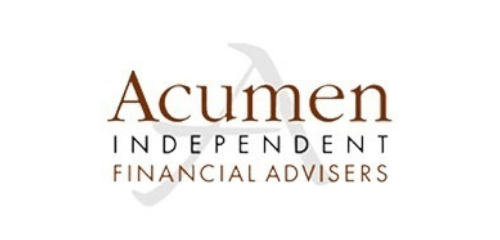Pensions
Pensions
Pensions are designed to enable you to save sufficient money during your working life to provide an income stream for you to live comfortably after you have retired. There are many different ‘tools’ used to save for retirement, the taxation and investment elements of pensions can appear baffling. We specialise in explaining, recommending and monitoring pensions for you. Below are the most common sources of pension income to provide for your retirement.
Single Tier State Pension
The new State Pension is a regular payment from the government that you can claim if you have reached State Pension Age (SPA) on or after 6 April 2016. Other arrangements applied prior to that date.
You’ll be able to get the new State Pension if you are eligible and:
• a man born on or after 6 April 1951
• a woman born on or after 6 April 1953
If you reached State Pension age before 6 April 2016, you’d get the State Pension under the Basic State Pension and Additional State benefits headers as shown below. The full level of the state pension is £221.20 a week, or £11,502.40 a year. This rises to £230.30 a week (£11,975.60 a year) from April 2025, but you won't necessarily get this amount. Your National Insurance record is used to calculate your new State Pension. You’ll usually need 10 qualifying years to get any new State Pension, 35 qualifying years for the full amount.
The amount you get can be higher or lower depending on your National Insurance record.
The basic State Pension applies to people whose State Pension Age falls before 6th April 2016, for people who have paid sufficient National Insurance Contributions while at work or have been credited with enough contributions. **
Additional State Pension (as above) – referred to as the State Second Pension (S2P) but before 6 April 2002, it was known as the State Earnings Related Pension Scheme (SERPS). From 6 April 2002, S2P was reformed to provide a more generous additional State Pension for low and moderate earners, carers and people with a long-term illness or disability and is based upon earnings on which standard rate Class 1 National Insurance Contributions are paid or treated as having been paid. Additional State Pension is not available in respect of self-employed income.
From April 2016, both the basic State Pension and Additional State Pension were combined to offer a simple single tier flat rate pension. **
An occupational pension (through an employer’s pension scheme) – This could be a final salary scheme (referred to as defined benefit) or a money purchase scheme (usually referred to as defined contribution). Pensions deriving from final salary schemes are usually based on your years of service and final salary multiplied by an accrual rate, commonly 60ths. The benefits from a money purchase scheme are based on the amount of contributions paid in and how well the investments in the scheme perform.
Personal pensions schemes (including stakeholder schemes) – these are also money purchase schemes and are open to everyone and especially useful if you are self-employed, just for topping up existing arrangements. From October 2012, all employers now have to offer their employees, who meet certain criteria, automatic enrolment into a workplace pension.
Retirement Options – there are now a vast array of different products that may be used at retirement to provide benefits, from the traditional form of annuity that provides a regular income stream to Flexi-access Drawdown which enables lump sums of benefits to be taken either as a one-off payment or over a given number of years. Given the complexity and choice all individuals now have, it is important to seek independent financial advice before making any decisions.
State Pensions may not produce the same level of income that you will have been accustomed to whilst working. It’s important to start thinking early about how best to build up an additional retirement fund. You’re never too young to start a pension – the longer you delay, the more you will have to pay in to build up a decent fund in later life.
** For those who have reached State Pension Age on or after 6th April 2016, these no longer apply.
THE FINANCIAL CONDUCT AUTHORITY DOES NOT REGULATE TAXATION ADVICE.
Pensions are a long-term investment. You may get back less than you put in. Pensions can be and are subject to tax and regulatory change; therefore, the tax treatment of pension benefits can and may change in the future.
Pension Simplification
Pension simplification introduced two new controls, the Lifetime Allowance (LA) and Annual Allowance (AA). The LA is currently £1,073,100 and the individual AA is £60,000.
Most individuals are able to fund up to these limits with the possibility to also carrying forward unused AA from the previous three years. Exceeding the LA or the AA will trigger a tax charge.
The changes include:
• To increase the flexibility of the drawdown rules by removing the maximum ‘cap’ on withdrawal and minimum income requirements for all new drawdown funds from 6 April 2015
• To enable those with ‘capped’ drawdown to convert to a new Flexi-access Drawdown fund once arranged with their scheme
• To enable pension schemes to make payments directly from pension savings with 25% taken tax-free, known as the Uncrystallised Fund Pension Lump Sum (UFPLS) option
• To remove restrictions on lifetime annuity payments
• To ensure that individuals do not exploit the new system to gain unintended tax advantages by introducing a reduced Annual Allowance of £10,000 for money purchase savings where the individual has flexibly accessed their savings
• To increase the maximum value and scope of trivial commutation lump sum death benefits.
Other changes include:
• Early retirement age available from age 55
• Full concurrency (i.e. being able to pay into any array of plans you wish), subject to the Annual Allowance and potential for carry forward
• Wide investment flexibility
• Up to 25% tax-free cash
• The ability to commute ‘small’ funds as a one-off lump sum as opposed to having to draw a regular income from age 55 (subject to part of the fund being taxed)
• Flexible options at retirement when deciding to take benefits such as Flexi-access Drawdown
• No need to ‘have to’ secure benefits at age 75 via an annuity. In addition, pension freedom gives individuals further and greater flexibility to access their pension savings from age 55.
Get Professional Advice for Your Pension Scheme
Pensions are a long-term investment. You may get back less than you put in. Pensions can be and are subject to tax and regulatory change therefore the tax treatment of pension benefits can and may change in the future
Your Retirement Options
From age 55, there are a number of options available to you.
• The ability to draw your benefits available from the existing provider
• Purchase an annuity with a different provider on the open market, this could potentially increase the payments to you
• Transfer to Flexi-access Drawdown (or a third way plan)
• Use the Uncrystallised Fund Pension Lump Sum (UFPLS) rules
• Transfer to phased retirement
• Transfer the full amount to any/a combination of the above
• Undertake a partial transfer to any/a combination of the above
Personal and Stakeholder Pensions
Personal Pensions represent a popular and attractive way of saving for your retirement.
All monies invested into your fund grow free of Capital Gains Tax, and the contributions you make are enhanced by Income Tax relief at source. For example, if you invest £80, the government adds on tax relief (currently 20%) to enhance your contribution to £100. If you are a higher rate taxpayer, you can claim additional relief through your PAYE coding. An Annual Allowance of up to £40,000 is available as well as the possibility of utilising potential carry forward of unused Annual Allowances.
A personal pension is an arrangement made in your name over which you have personal control. You can alter your contributions, suspend them, or stop them completely. Contributions are restricted to £4,000 under these plans where an individual has already flexibly accessed any income under another money purchase plan.
You will be eligible to take 25% of your accumulated fund tax-free when you retire, the earliest age being from 55. There are a range of options when you decide to take benefits such as purchasing an annuity or electing capped or flexible drawdown.
Personal Pensions usually offer a range of investment mediums to suit your attitude to investment risk, and you can change your investment at any time.
Stakeholder pensions are similar to personal pensions, but have their charges capped at 1.5% for the first 10 years, reducing to 1% thereafter. Whilst stakeholders are generally considered a little cheaper than personal pensions, investment choices may be restricted. Pensions are a long-term investment. You may get back less than you put in. Pensions can be and are subject to tax and regulatory change therefore the tax treatment of pension benefits can and may change in the future
Other Types of Pensions
In recent years the pensions industry has become more advanced in terms of the flexibility of investments available and the structure of the actual pension arrangements. This is an area of constant change and we recommend regularly reviewing your pension provision to plan for a secure and enjoyable retirement.
Self-Invested Personal Pensions (SIPPs)
A Self-Invested Personal Pension (SIPP) is a tax-efficient wrapper within which a wide range of investments can be held. SIPPs have the same tax benefits and regulations as conventional personal pension plans but have control over the investment choice – each SIPP is unique to the individual. Otherwise, it operates in the same way as a conventional personal pension in respect of contributions and eligibility, for tax purposes. A SIPP must appoint a scheme administrator, usually the recognised product provider.
The complex nature of a SIPP means that it is not suitable for all investors. Often, the benefits of ‘self-investment’ are only advantageous to people with very large funds and/or investors with some level of sophistication when it comes to investment decisions.
Often, there are additional charges for arranging and dealing within a SIPP and these charges would erode smaller funds quickly.
The benefits of using a SIPP include being able to invest in:
• Stocks and shares listed or dealt on an Inland Revenue recognised stock exchange, including AIM
• Stock exchanges that are not recognised by HMRC
• Unit trusts, Open Ended Investment Companies (OEICs)
• Warrants, covered warrants
• Government stock and fixed interest stock
• Unquoted shares
• Commercial property
• Property funds
We will be able to provide more details and make a recommendation based on your circumstances. Pensions are a long-term investment. You may get back less than you put in. Pensions can be and are subject to tax and regulatory change, therefore the tax treatment of pension benefits can and may change in the future.




